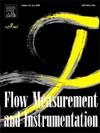Physically Constrained Generative Adversarial Network Data Augmentation Method for Multichannel Ultrasonic Flowmeters of Natural Gas
IF 2.3
3区 工程技术
Q2 ENGINEERING, MECHANICAL
引用次数: 0
Abstract
During the performance evaluation process of ultrasonic flowmeters, there are issues such as high cost of acquiring real flow data and severe scarcity of data. Traditional data augmentation methods suffer from problems such as low accuracy and poor diversity, making it difficult to effectively model ultrasonic flowmeter data. This paper proposes a method that incorporates physical constraints into a conditional Wasserstein Generative Adversarial Network with gradient penalties (CWGAN-GP) for ultrasonic flowmeters data augmentation. Experimental results demonstrate that the data generated by our model meets the requirements in terms of accuracy and diversity, and closely aligns with the distribution of the original data. In the performance evaluation of ultrasonic flowmeters, the evaluation model derived from data generated by our method demonstrates a reduction in the average percentage error by 1.495% compared to the assessment using original data without data augmentation.
求助全文
约1分钟内获得全文
求助全文
来源期刊

Flow Measurement and Instrumentation
工程技术-工程:机械
CiteScore
4.30
自引率
13.60%
发文量
123
审稿时长
6 months
期刊介绍:
Flow Measurement and Instrumentation is dedicated to disseminating the latest research results on all aspects of flow measurement, in both closed conduits and open channels. The design of flow measurement systems involves a wide variety of multidisciplinary activities including modelling the flow sensor, the fluid flow and the sensor/fluid interactions through the use of computation techniques; the development of advanced transducer systems and their associated signal processing and the laboratory and field assessment of the overall system under ideal and disturbed conditions.
FMI is the essential forum for critical information exchange, and contributions are particularly encouraged in the following areas of interest:
Modelling: the application of mathematical and computational modelling to the interaction of fluid dynamics with flowmeters, including flowmeter behaviour, improved flowmeter design and installation problems. Application of CAD/CAE techniques to flowmeter modelling are eligible.
Design and development: the detailed design of the flowmeter head and/or signal processing aspects of novel flowmeters. Emphasis is given to papers identifying new sensor configurations, multisensor flow measurement systems, non-intrusive flow metering techniques and the application of microelectronic techniques in smart or intelligent systems.
Calibration techniques: including descriptions of new or existing calibration facilities and techniques, calibration data from different flowmeter types, and calibration intercomparison data from different laboratories.
Installation effect data: dealing with the effects of non-ideal flow conditions on flowmeters. Papers combining a theoretical understanding of flowmeter behaviour with experimental work are particularly welcome.
 求助内容:
求助内容: 应助结果提醒方式:
应助结果提醒方式:


